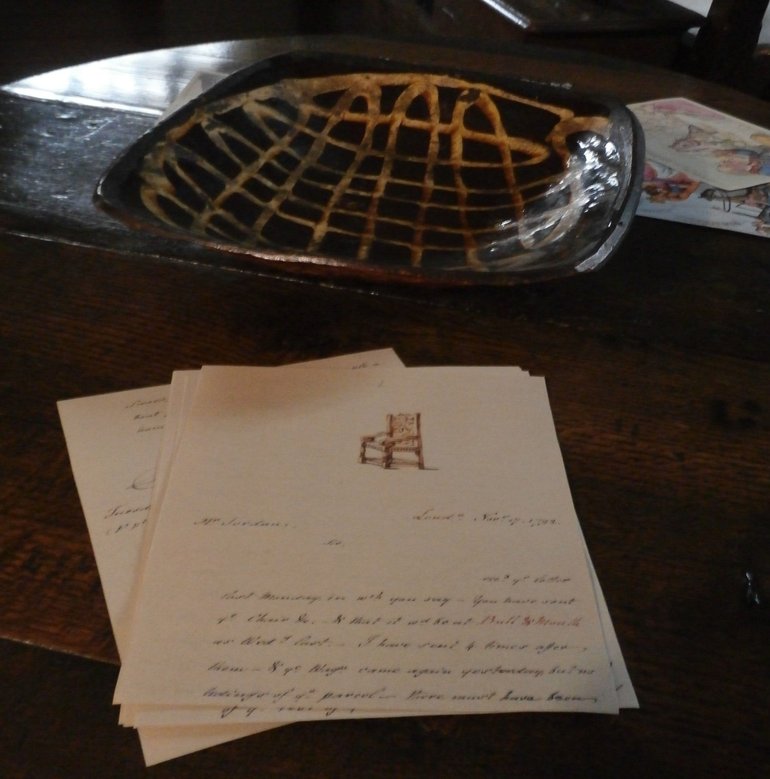By the late 1700s appreciation of the life of William Shakespeare had grown, and this attracted pilgrims to Stratford-upon-Avon. Now poor, the Hathaways of this period were beginning to market their heritage to help make ends meet. By then the Hathaways at the cottage had lost the Hathaway surname through marriage when Susanna Hathaway married William Taylor; all the more reason to now exhibit the family connection.
By now an old woman, Susanna may have greeted the travel-writer Samuel Ireland into her home. It was during his visit to Stratford in 1792 that Samuel Ireland had learned from a descendent of Joan Hart (Shakespeare’s sister) about a chair owned by the Hathaways. This was known as ‘Shakespeare’s Courting Chair’ in Shakespeare’s remembrance, from which Shakespeare supposedly recited poetry to Anne on his lap. The chair was thought to have been passed on to the Hathaway family via Shakespeare’s granddaughter, Lady Elizabeth Barnard. Ireland, who had an obsession with collecting Shakespeare memorabilia, visited Shottery with the intention of purchasing the chair.

The oak-and-walnut panel back armchair displayed elements of the coat of arms of Shakespeare and was made during his lifetime. Satisfied with this Shakespearian relic, Samuel Ireland organised the purchase and transportation of the chair, along with a bugle bead purse which supposedly belonged to Anne Hathaway. Attempts to also buy the ‘Hathaway Bed’ were denied by the family (possibly by Susanna Taylor herself, who had slept in the bed since childhood).
The delivery of the chair to Ireland’s home in London was beset with complications and delays. Pieces of glass which were also being transported were either broken or lost entirely. John Jordan, a local poet who was overseeing the process, frustrated Ireland with his apparent incompetence (copies of their correspondence are on display at the Cottage).

This bad luck continued in Samuel Ireland’s life, and his fanatical pursuit of Shakespeare memorabilia would come to harm him in the following years. Samuel Ireland’s son, William Henry Ireland, in a bid to please his enthusiastic father produced a large number of fake Shakespearian documents (including a letter to Anne Hathaway), and fake plays such as Vortigern and Rowena, which his father subsequently published as genuine. William Henry Ireland is also often considered a likely candidate for carving the ‘WAS’ (for William and Anne Shakespeare) on ‘Shakespeare’s Courting Chair’.
When the Ireland documents were discovered as forgeries, Samuel Ireland’s reputation was tarnished, somewhat unfairly, despite the eventual confessions of his son.
The chair passed through private hands before re-emerging at an auction house, where it was acquired by successful bid in 2002 by the Shakespeare Birthplace Trust. This item was finally returned to Anne Hathaway’s Cottage, where you can see it on display today.
In the next blog post we shall look at one of Susanna Hathaway’s great-grandchildren, Mary ‘Hathaway’ Baker, and the acquisition of Anne Hathaway’s Cottage by the Shakespeare Birthplace Trust in 1892.
Read more about the Hathaway's and the Cottage through our previous posts.
